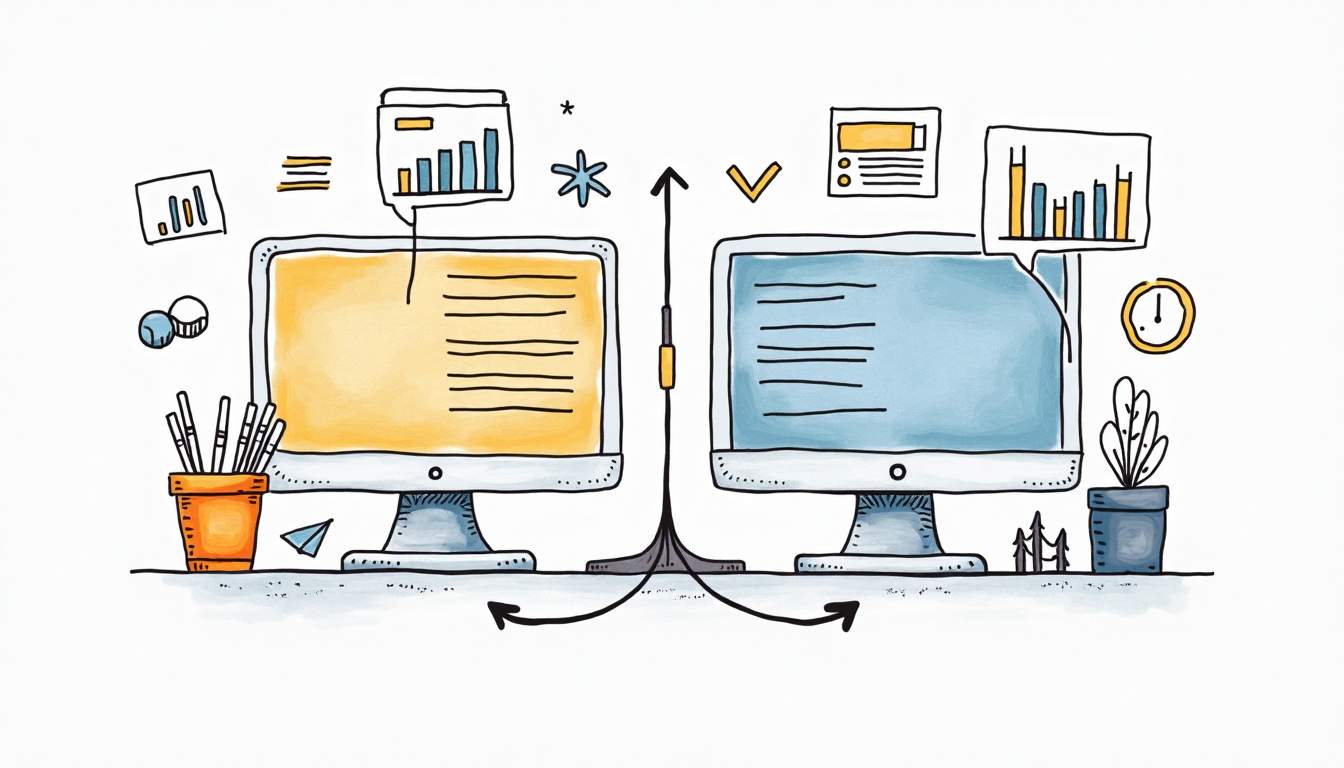Finding product-market fit (PMF) is the milestone that separates early-stage startups from scalable, sustainable businesses. PMF occurs when a product meets the needs of a clearly defined market, resulting in measurable traction, customer satisfaction, and growth. Achieving this fit is rarely straightforward, but A/B testing provides a structured, evidence-based way to validate assumptions, optimize features, and accelerate learning.
This article explores how hypothesis-driven development, iterative testing, and statistical rigor help startups navigate the path to PMF efficiently, while integrating AI-driven product engineering sprints to increase speed and precision.
Why A/B Testing Is Essential for Product-Market Fit
In a fast-moving market, relying on intuition alone is risky. Customer preferences shift quickly, and attention spans are limited. A/B testing for startups provides a scientific approach to test variations in product features, messaging, and onboarding flows to identify what resonates most with users.
Startups that adopt A/B testing can:
- Measure the real impact of changes on user engagement and retention
- Reduce wasted development effort on unproven features
- Make data-driven decisions to optimize the roadmap
- Accelerate the journey to PMF with measurable results
Hypothesis-Driven Development: Turning Assumptions into Tests
Hypothesis-driven development encourages startups to treat every feature, design change, or marketing tactic as a testable hypothesis rather than a guess.
Example: A startup hypothesizes that adding a personalized onboarding flow will increase retention by 15 percent. They set up an A/B test where one group sees the new flow while a control group sees the current version. Comparing retention rates provides concrete evidence on the change’s impact.
Key benefits include:
- Reduced wasted effort on unvalidated features
- Faster pivot-or-persevere decisions based on real-time feedback
- Cross-functional collaboration between developers, marketers, and product managers
- Cultivation of a continuous learning culture
At Wednesday Solutions, we leverage AI-driven product engineering sprints to run rapid experiments and iterate on hypotheses. This metric-driven approach allows startups to test multiple features simultaneously and optimize user flows more efficiently.
How to Structure Effective A/B Tests
Creating meaningful A/B tests requires clarity and rigor. Consider these steps:
- Define measurable hypotheses
Set goals such as increasing activation rate, reducing churn, or boosting conversion. - Segment users randomly
Avoid selection bias by ensuring test groups accurately represent your target audience. - Track relevant metrics
Focus on KPIs tied to PMF, such as retention, engagement, and time-to-value. - Control for context
Account for seasonality, market trends, and external factors that might influence results. - Iterate quickly
Use insights from tests to refine hypotheses and run subsequent experiments, accelerating product optimization.
Understanding Statistical Significance in Early-Stage Testing
Statistical significance ensures observed differences between test groups are not due to chance.
Startups should:
- Quantify uncertainty using p-values and confidence intervals
- Avoid multiple uncontrolled tests to reduce false positives
- Recognize that small early-stage samples can be noisy
- Use statistical calculators but understand the fundamentals for informed decisions
For example, a 10 percent increase in conversion might seem promising, but without enough data, it could be a fluke. Proper analysis ensures startups act on reliable insights.
Avoiding Bias and Misinterpretation
A/B testing can be compromised by:
- Selection bias: when test participants do not reflect the broader audience
- Confirmation bias: testing to confirm assumptions instead of challenge them
- Context neglect: ignoring seasonality, market changes, or external events
Mitigation strategies include random sampling, diversified user selection, and analyzing results in context. At Wednesday Solutions, we embed these practices into our AI-driven product engineering sprints, ensuring decisions are evidence-based and aligned with growth objectives.
Accelerating Product-Market Fit With AI-Driven Product Engineering Sprints
By combining hypothesis-driven development, statistical rigor, and iterative experimentation, startups can:
- Validate features and messaging in real time
- Reduce time-to-value for new users
- Increase retention, engagement, and lifetime value
- Avoid costly feature development that does not drive results
AI-driven product engineering sprints take this further by compressing validation cycles. At Wednesday Solutions, startups using these sprints have increased A/B testing iteration frequency by up to 50 percent, enabling faster hypothesis testing, quicker pivots, and earlier PMF achievement. This approach allows teams to experiment with multiple features simultaneously while maintaining robust, data-driven decision-making.
Summary: Make A/B Testing Your PMF Accelerator
A/B testing is more than a tool. It is a mindset that transforms product development into a scientific, data-driven process. Startups that embrace hypothesis-driven development, rigorous statistical testing, and AI-driven product engineering sprints can reach product-market fit faster, more efficiently, and with higher confidence.
Embedding A/B testing into your startup’s product strategy reduces guesswork, optimizes feature development, and ensures products resonate deeply with users.






